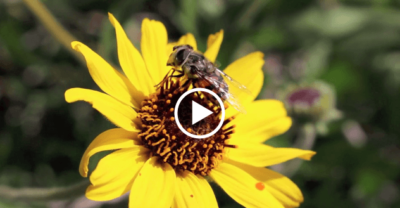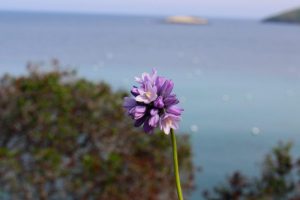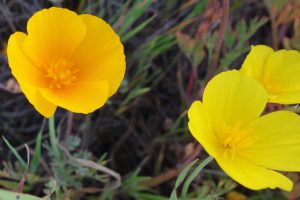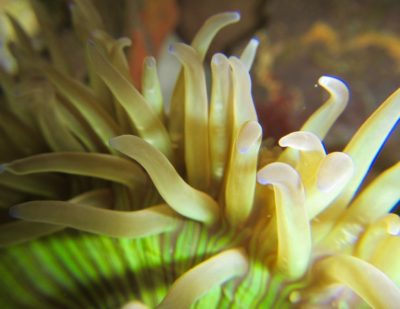
Spring is the season of new growth and blossoming life. Visiting CIMI during the spring feels dreamlike as you walk through the trails flecked with wildflowers of all shapes and sizes. Catalina Island is home to over 400 native plant species, and 200 non-native plant species. There are even 7 endemic plant species only found on the island, including the Catalina Ironwood and the Catalina Liveforever.
Since southern California does not get copious amounts of rain, our ecosystem is dominated by chaparral foliage. This ecoregion is characterized by woody shrubs, heat tolerant flora, and drought resistant plants. Many of the plants on Catalina Island have beneficial adaptations, making them perfectly equipped to live in this dry and rocky environment. One example is a flower called theBlue Hyacinth (Dichelostemma capitatum). Blue Hyacinth grow well in dry climates because of its ability to colonize after a fire. Their seedpods can lie dormant for over a decade until a fire scorches the plants around it; once the other plants have been removed, the Blue Hyacinth can quickly spread.
Though the wildflowers on Catalina are tough and resilient, they can’t do it all alone; angiosperms (flowering plants) are dependent on animals to carry their pollen around the island as part of the fertilization process. During the day, flowers open up wide and produce nectar to attract bees, butterflies, hummingbirds, and more. When these animals brush up against the anther (the male part of the flower), they collect pollen on their bodies, and as they travel from flower to flower, the animals deliver the pollen to other plants’ stigmas (the female part of the flower). This process fertilizes the angiosperms, allowing them to germinate and spread.
You may have noticed that many flowers fold up their petals at night. Are they doing this as a way to tuck themselves in for bed? Or is there a scientific reason for this? This behavior, called nyctinasty, is common in many angiosperms – including Catalina Island’s Bush Poppy and Mariposa Lily. Scientists aren’t sure exactly why this happens, but there are many theories. As mentioned before, these flowers are dependent on biological pollinators to move their pollen. Many of these animals are asleep at night, meaning that the flowers have no reason to stay open. Some think that closing the flowers is a way to keep morning dew from dampening the pollen, making it too wet and heavy to stick to pollinators. Another theory is that flowers fold up in order to reduce the risk of freezing. Still others think that by closing, the flowers are conserving energy and odor for the next day. Do you have any other ideas why flowers might close at night?
Written by: Max Veenema
Encelia Californica – Bush Sunflower

Dichelostemma Pulchellum – Blue Hyacinth

Eschscholzia Californica – California Poppy



